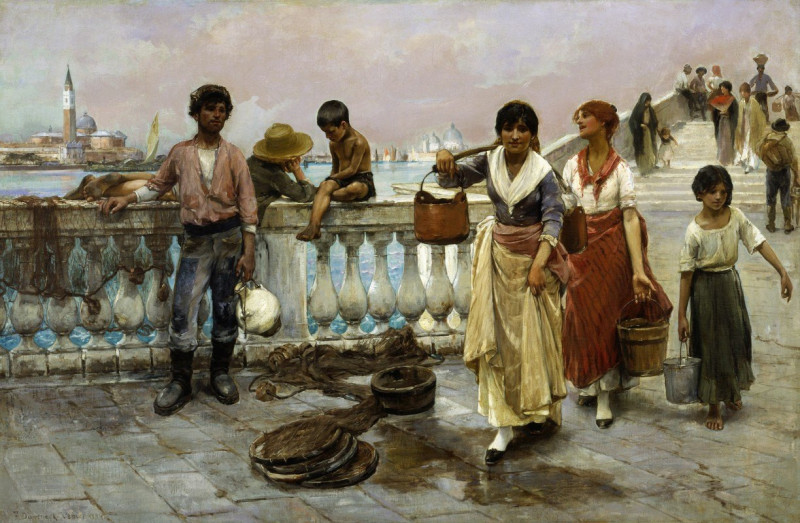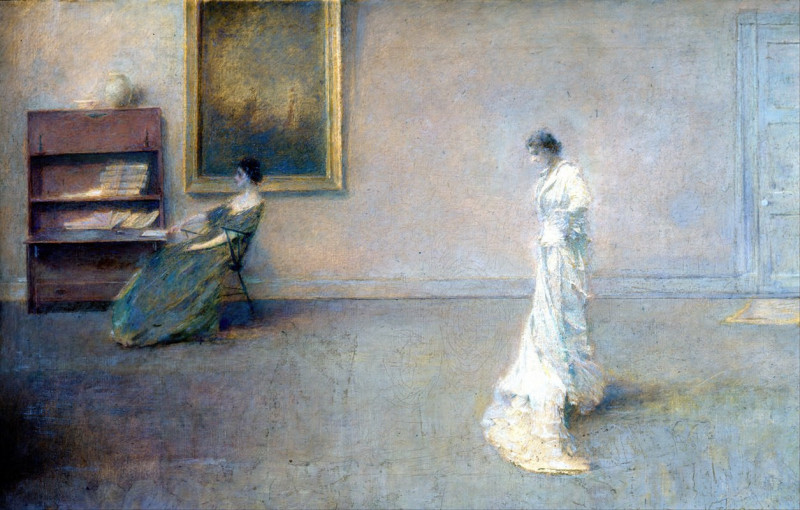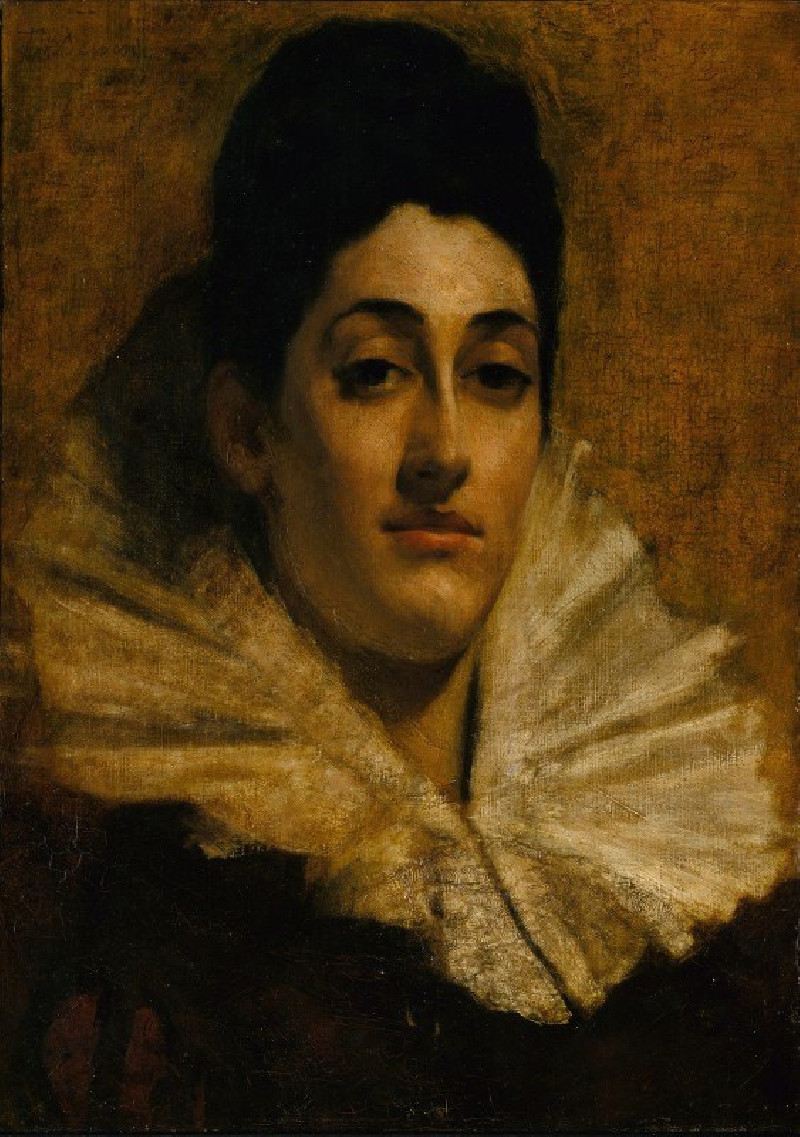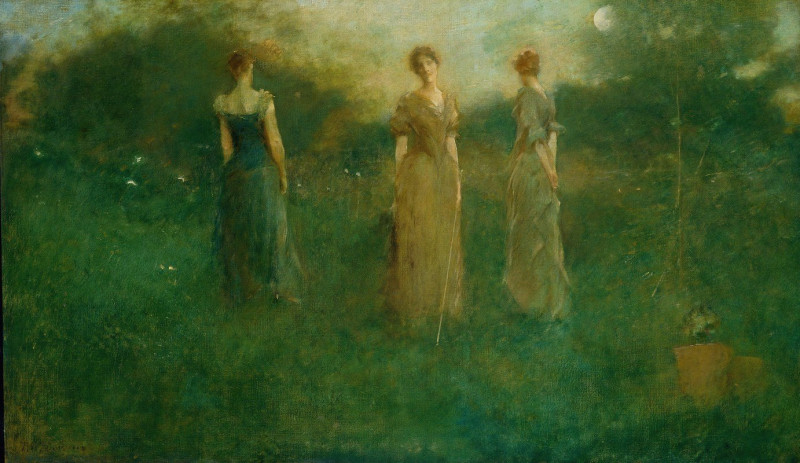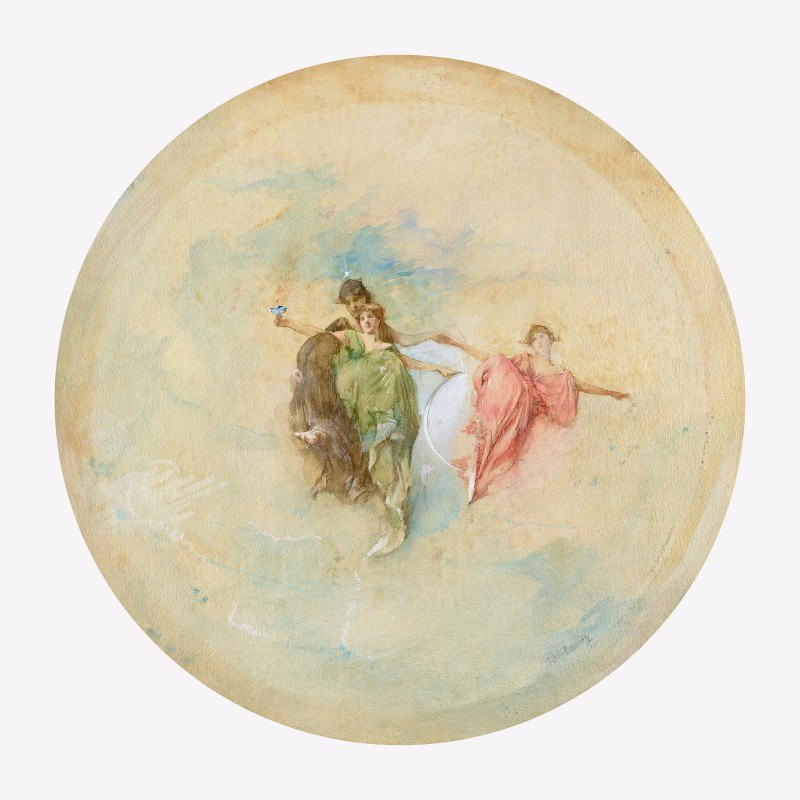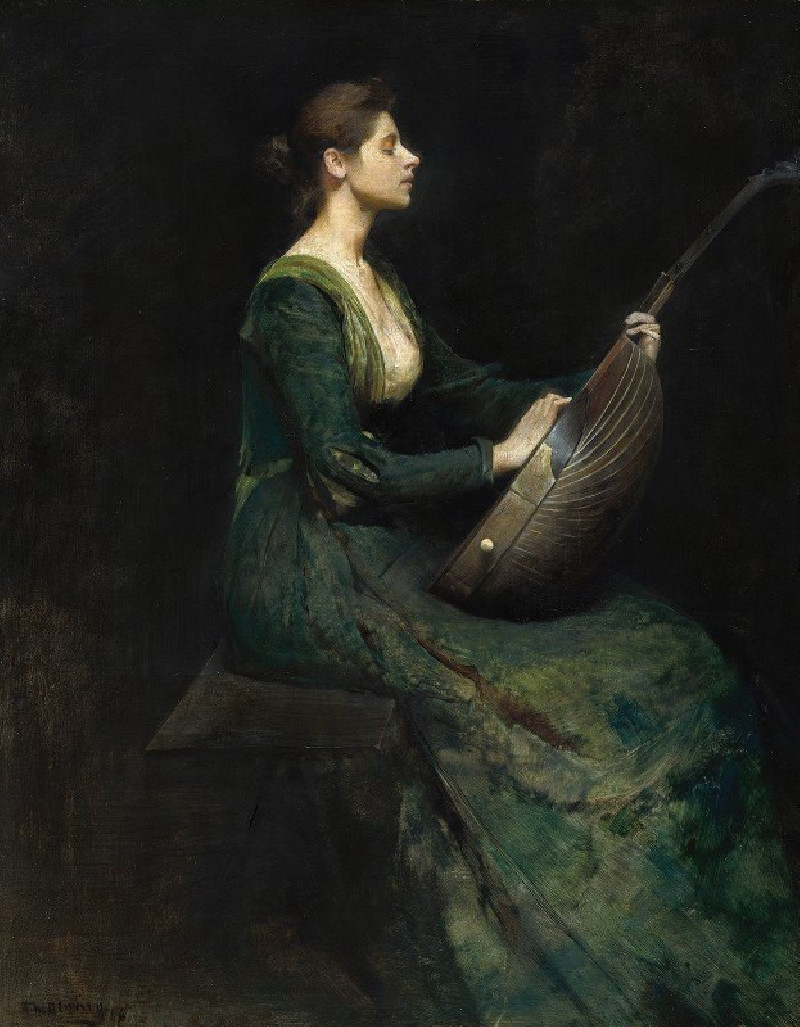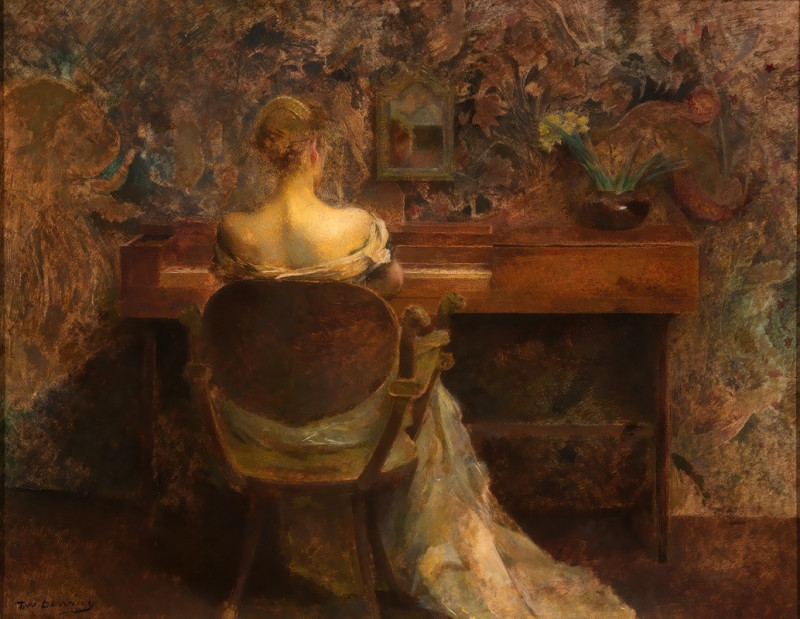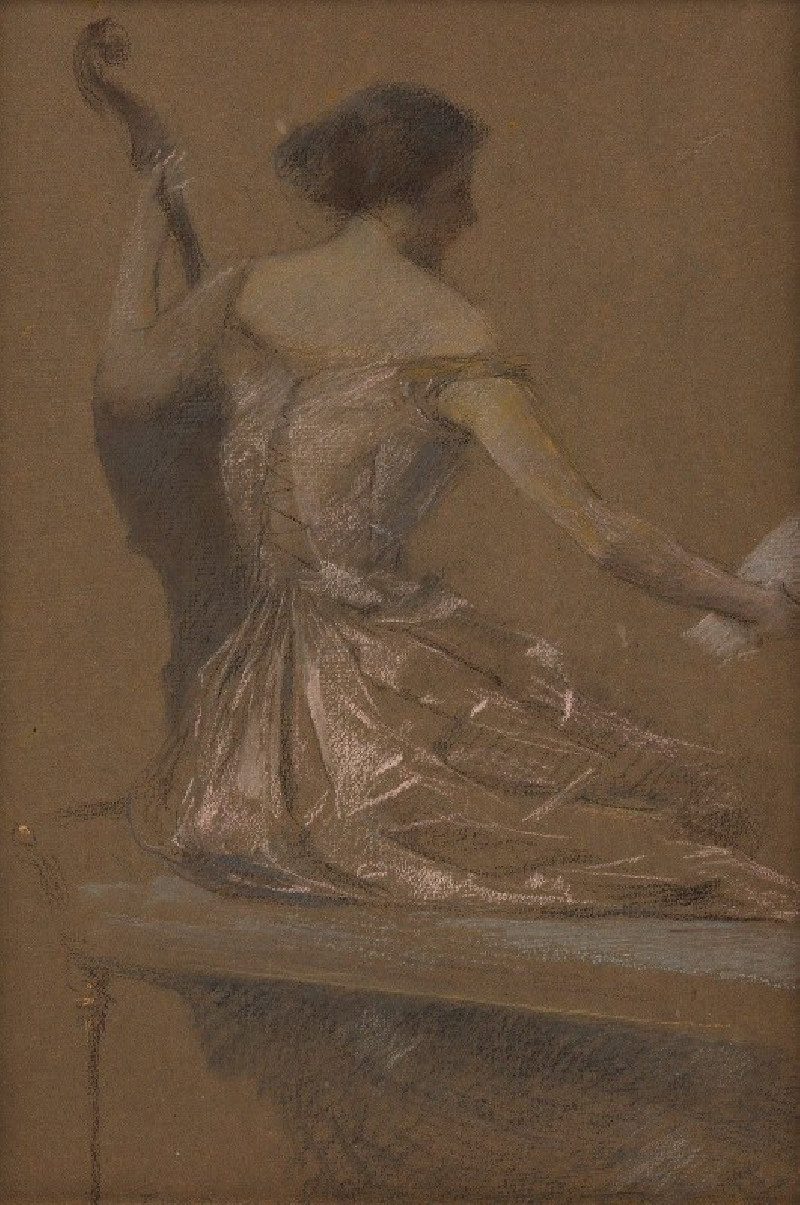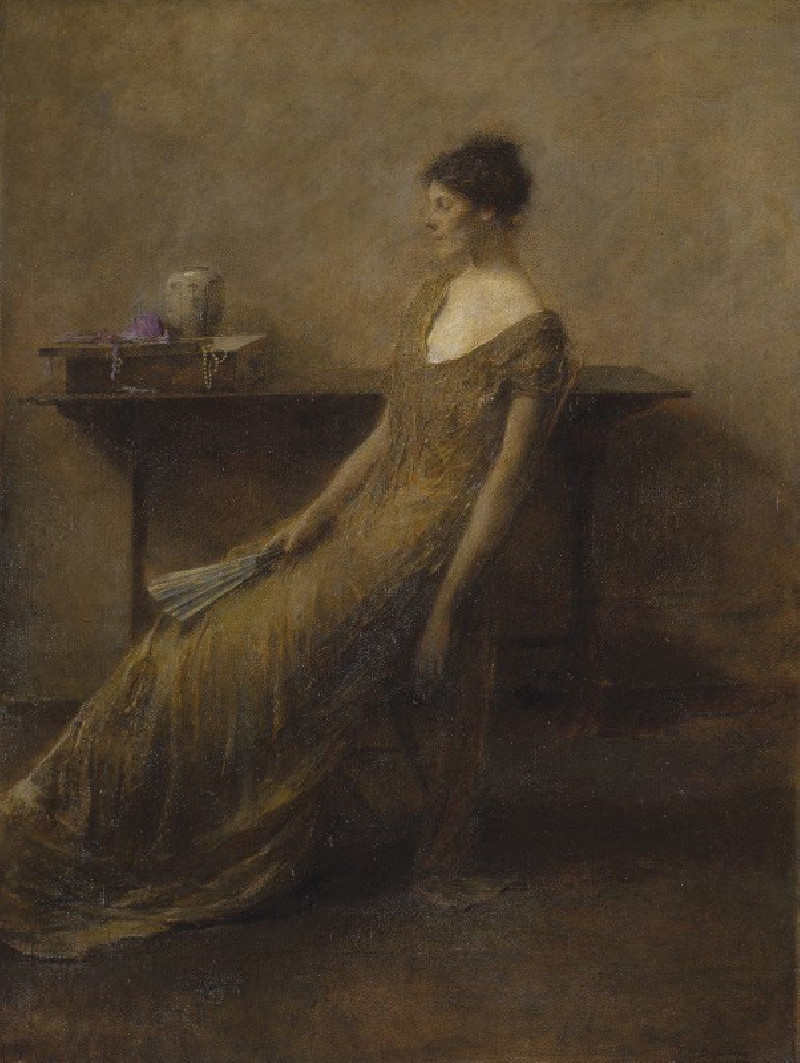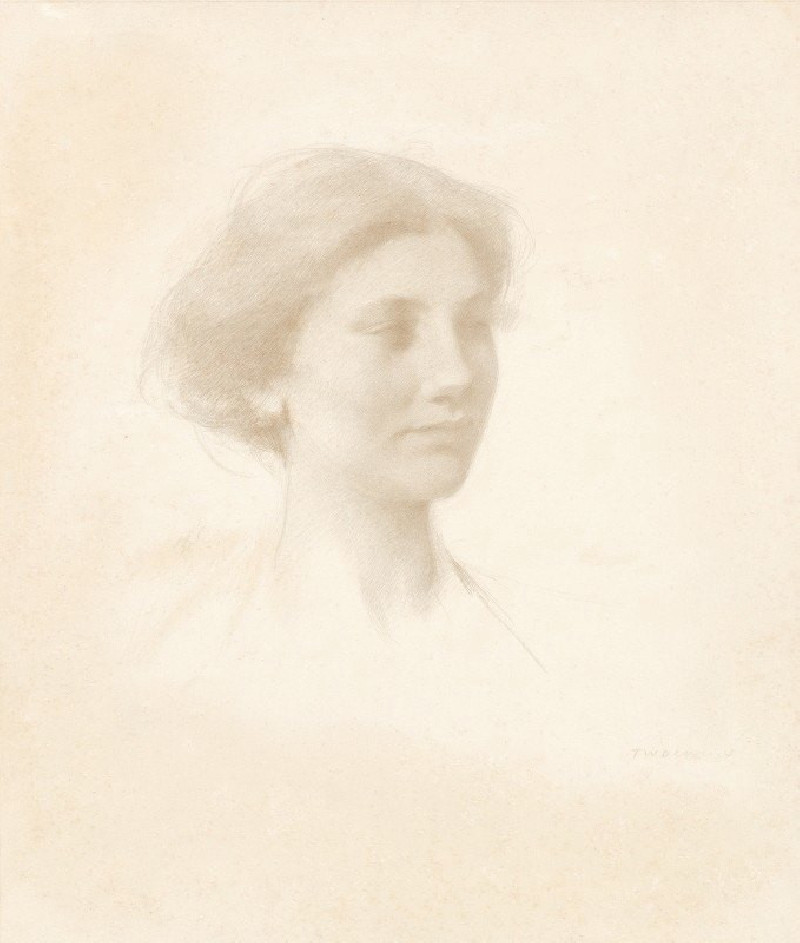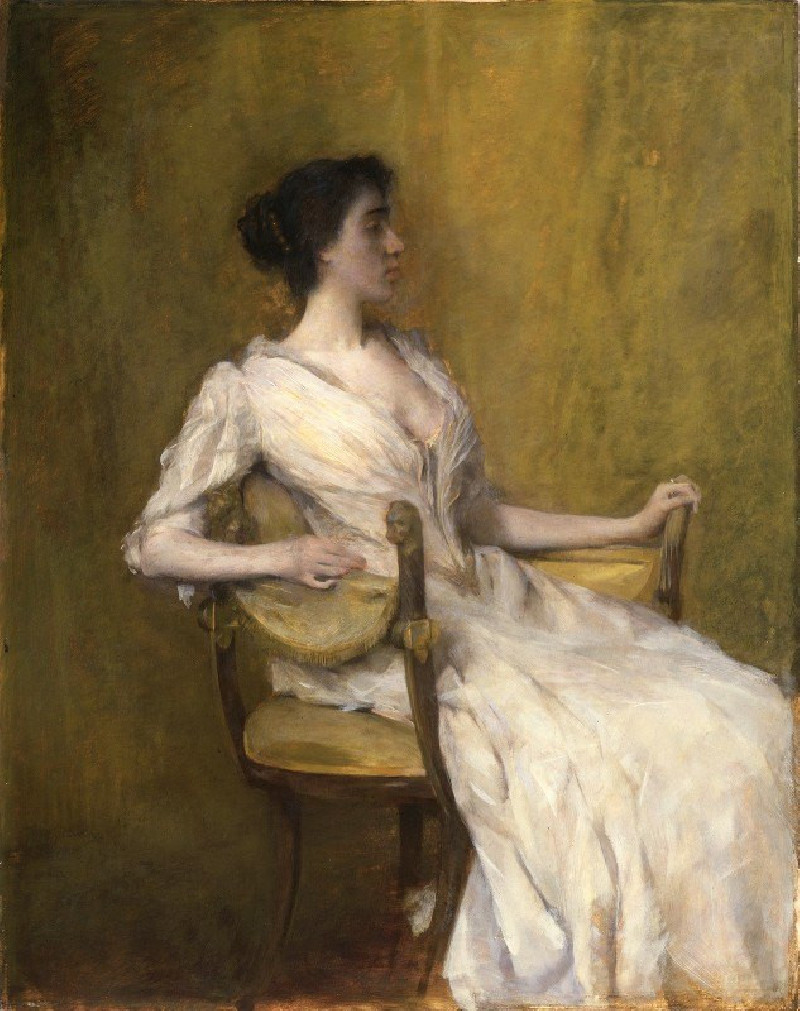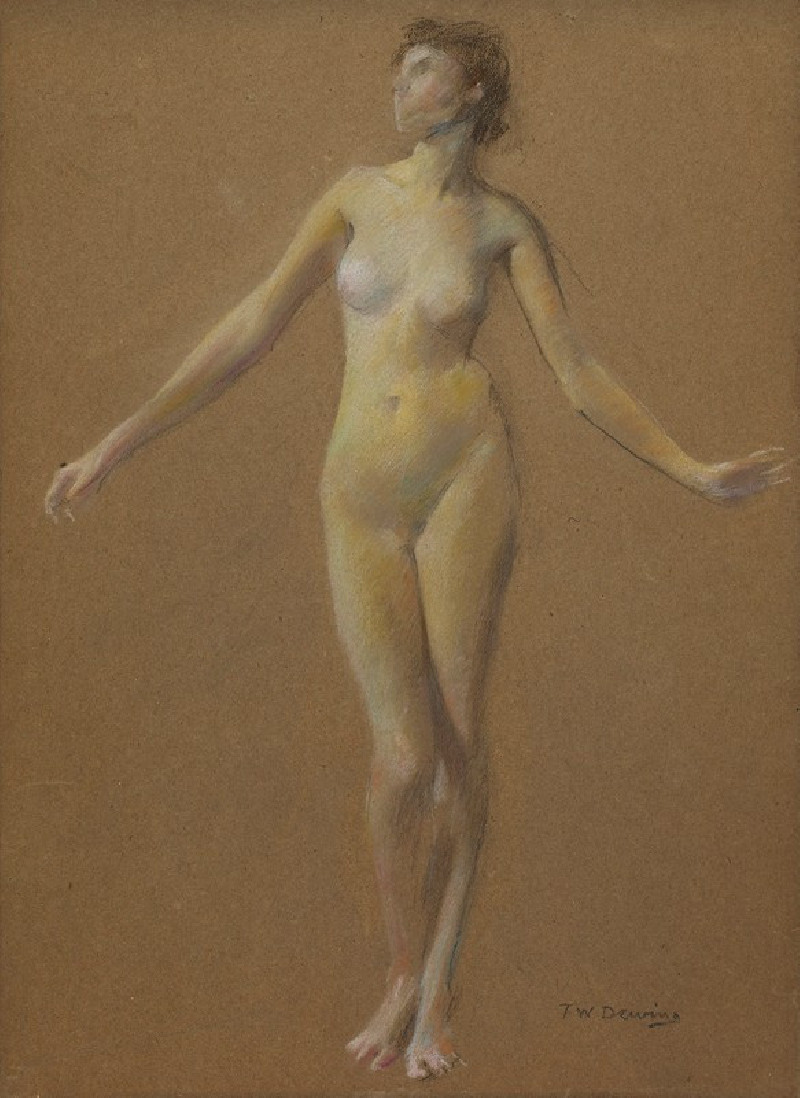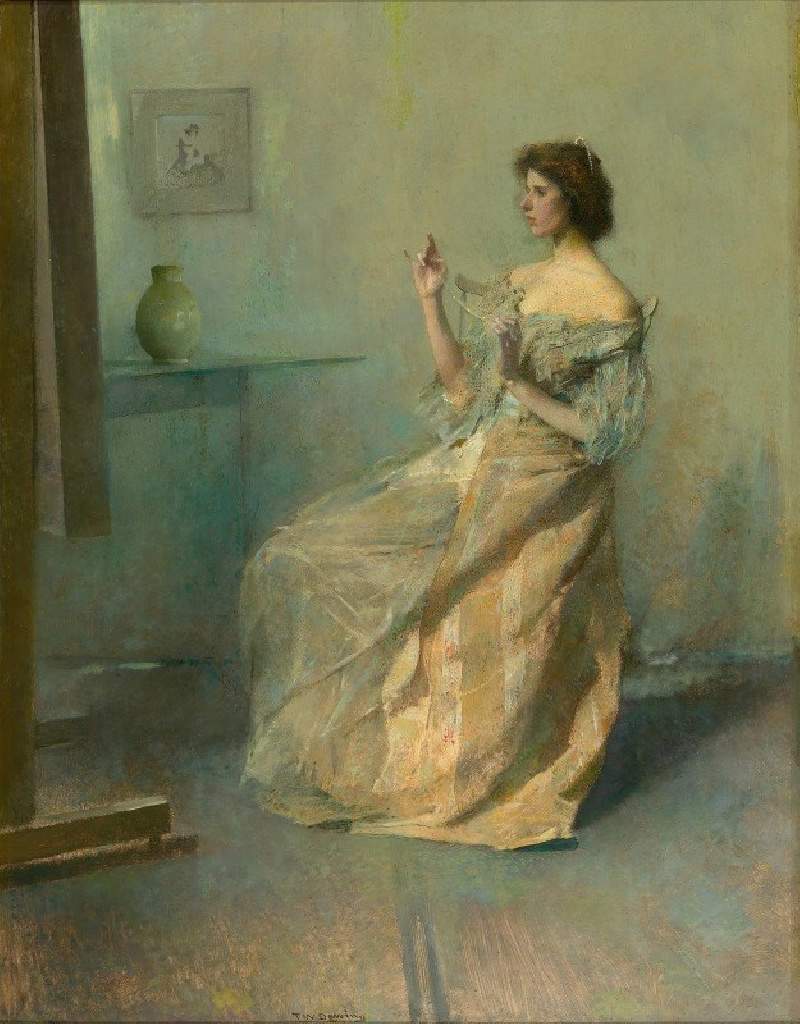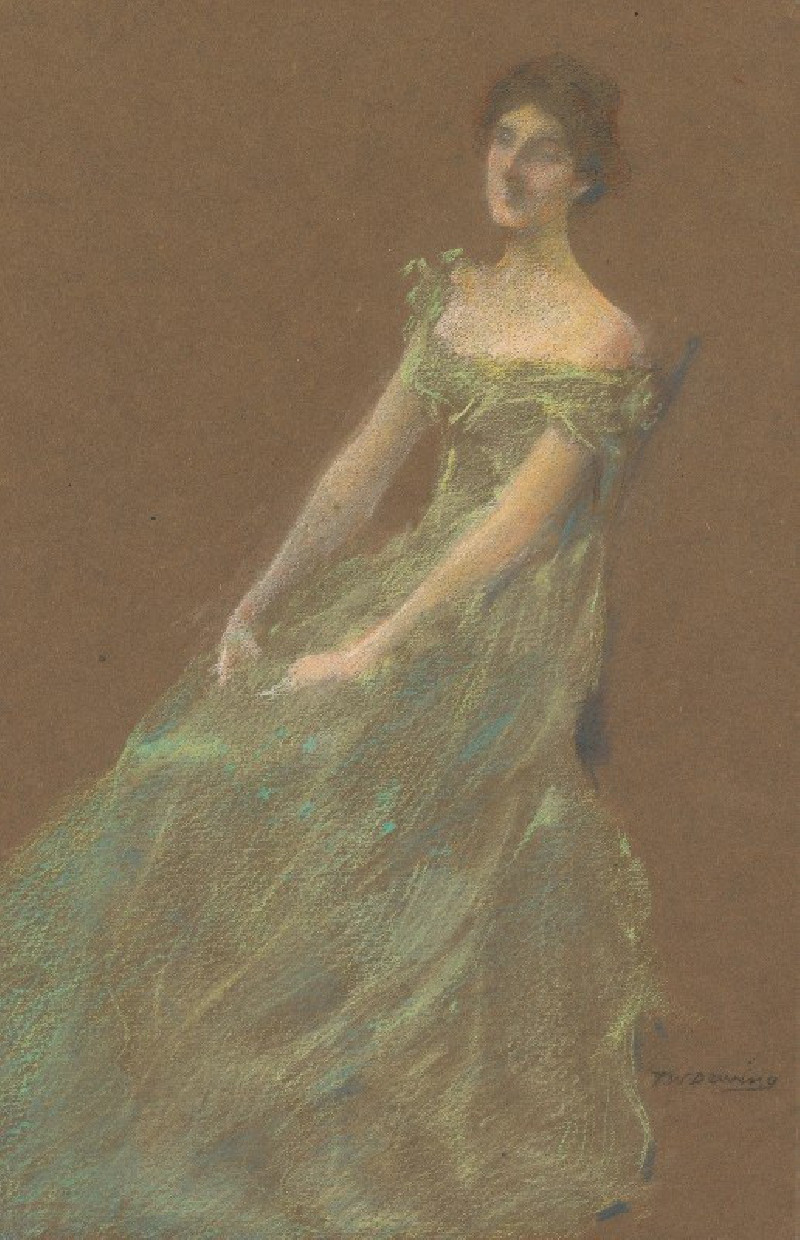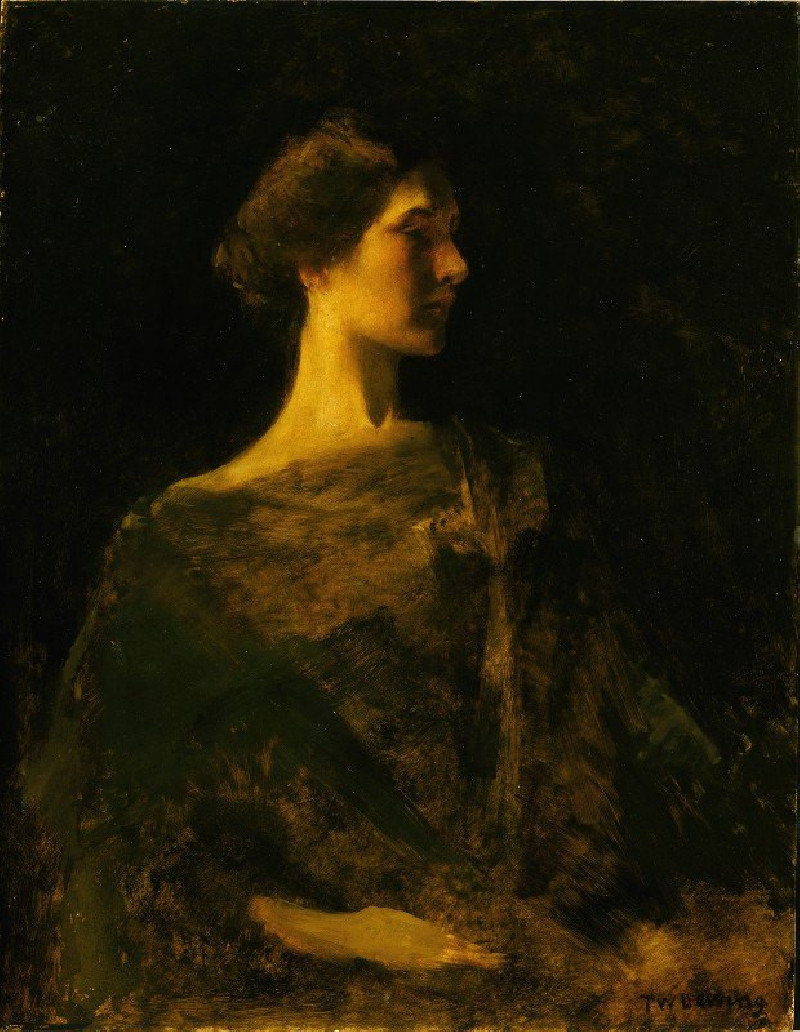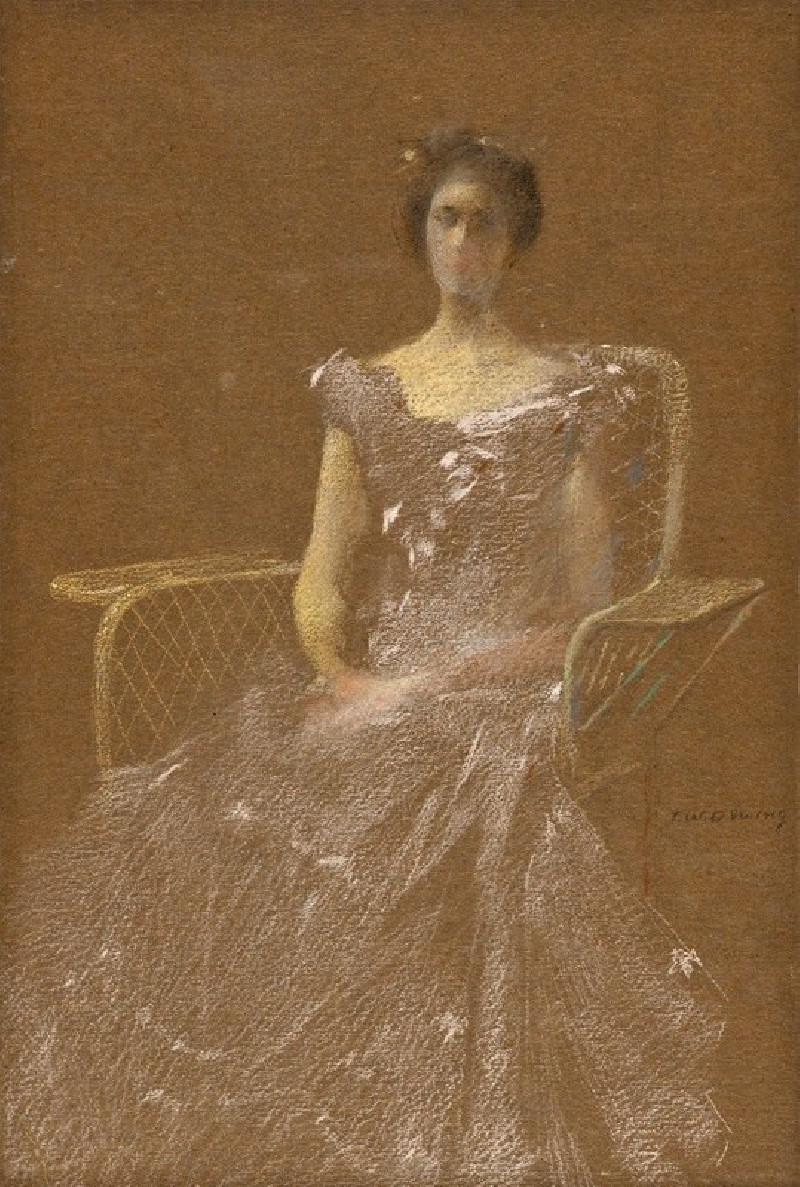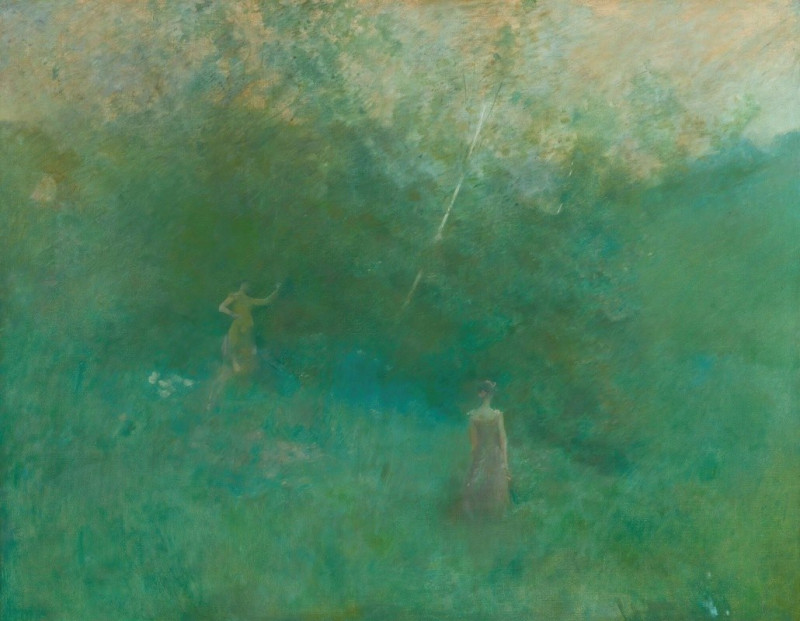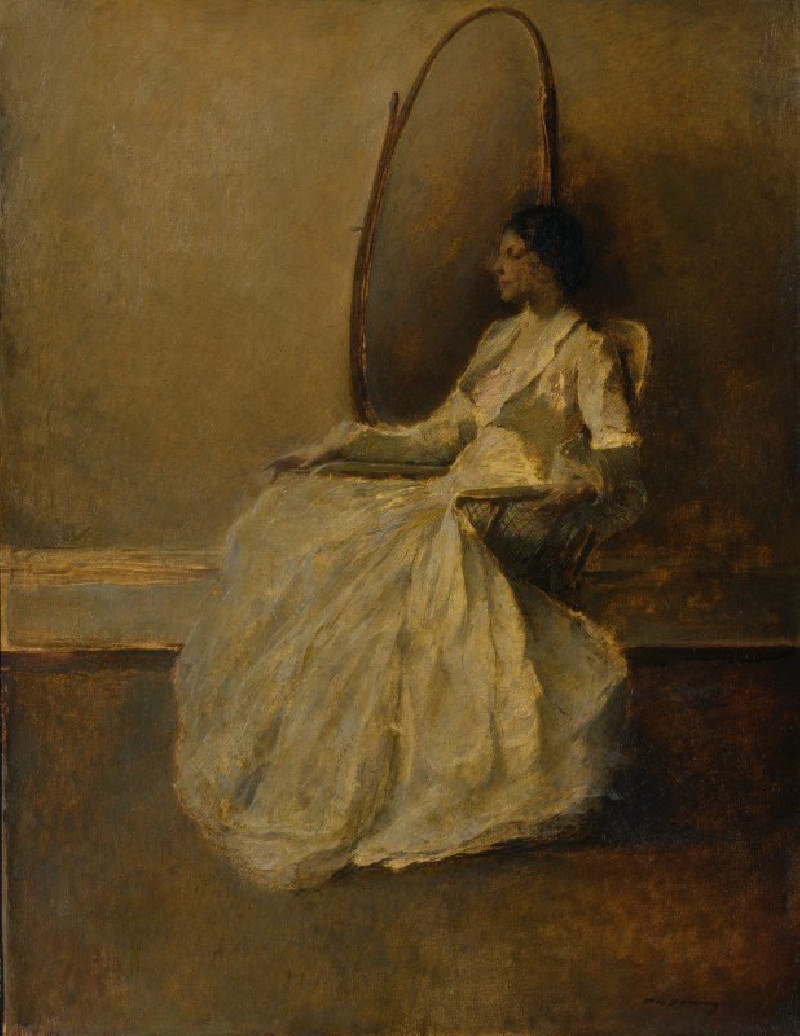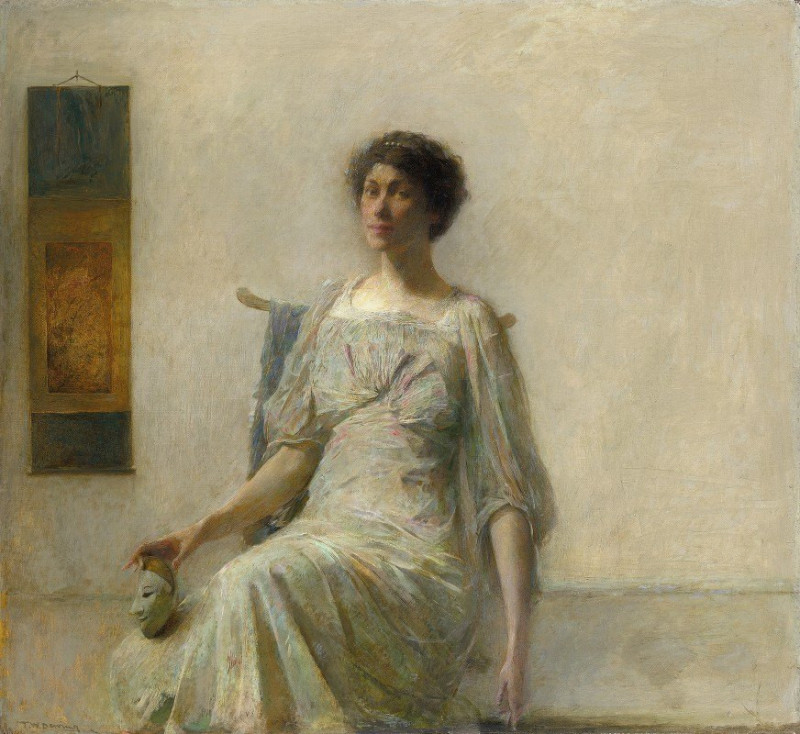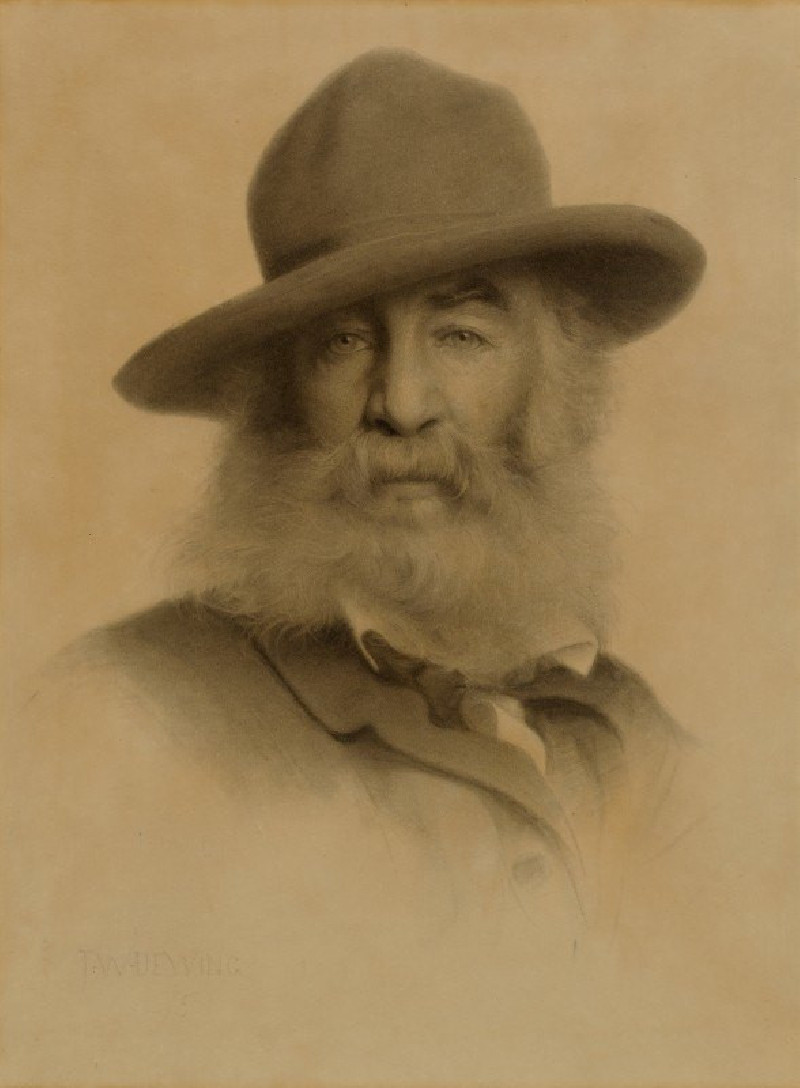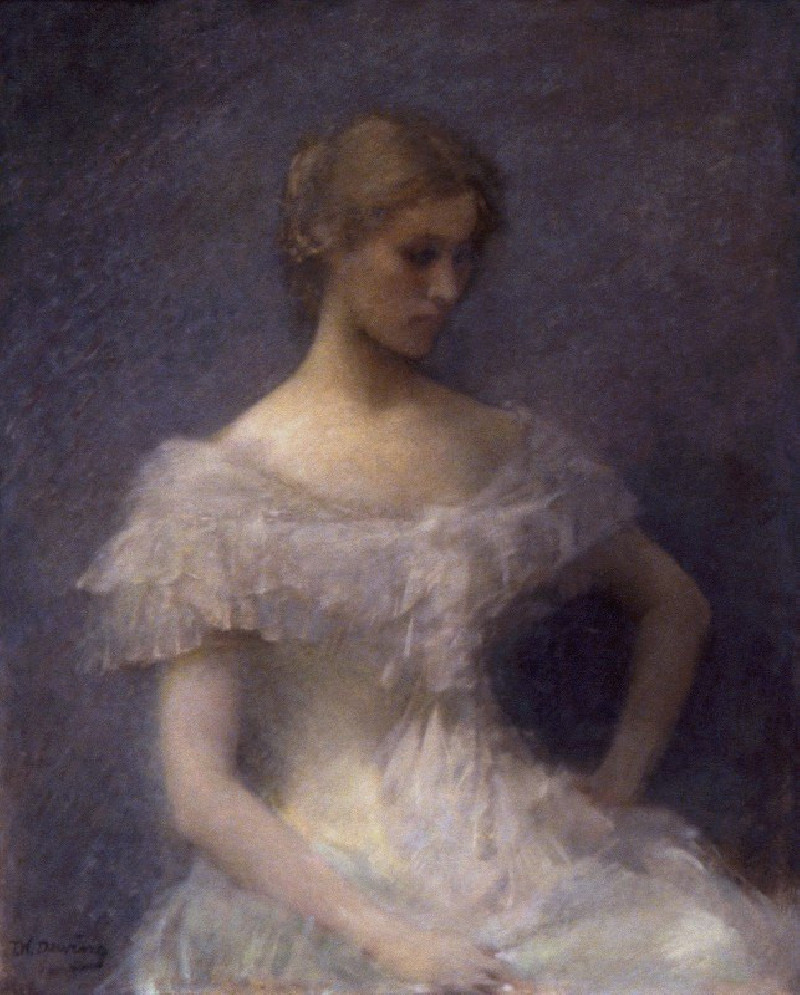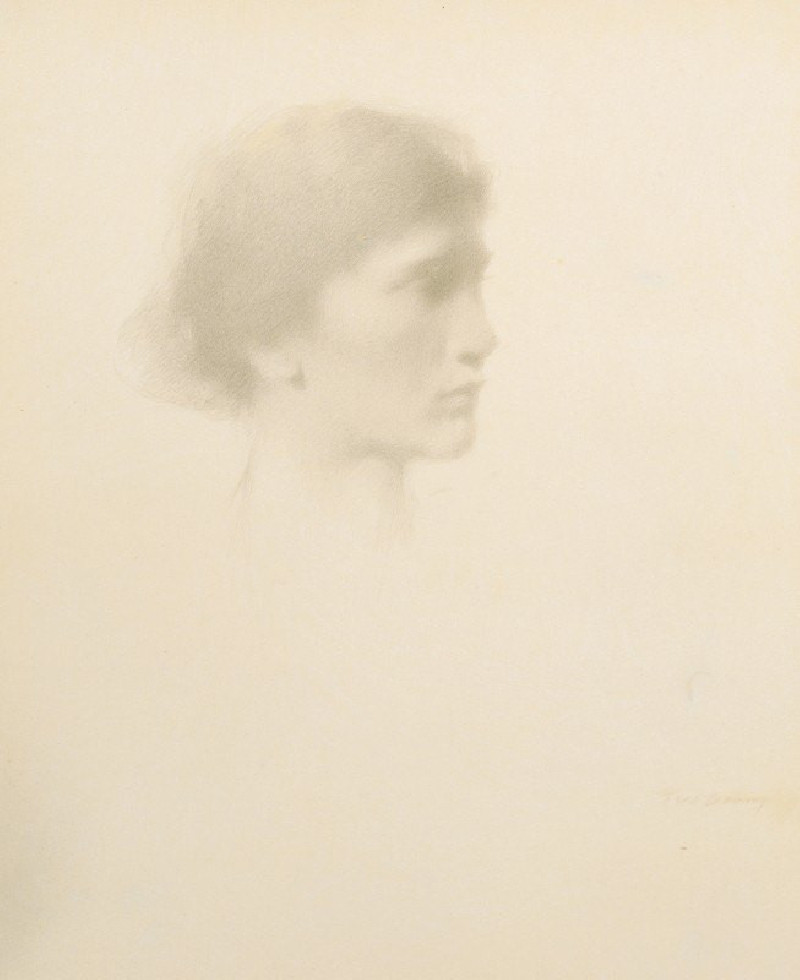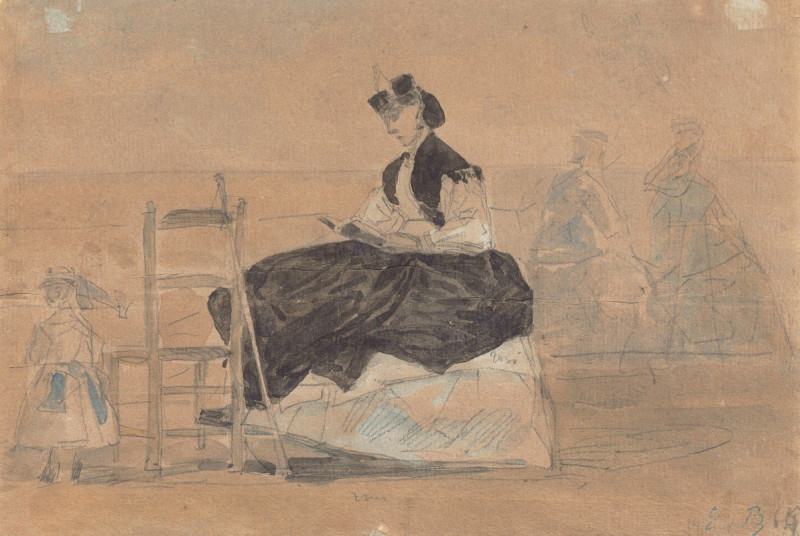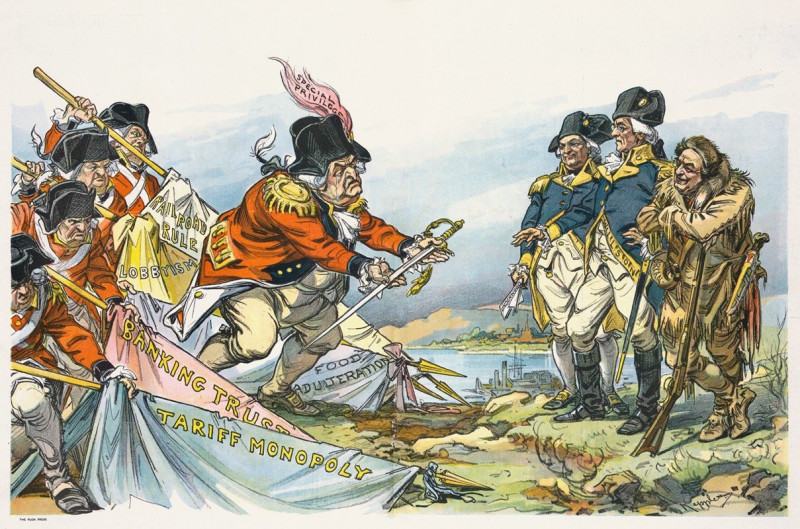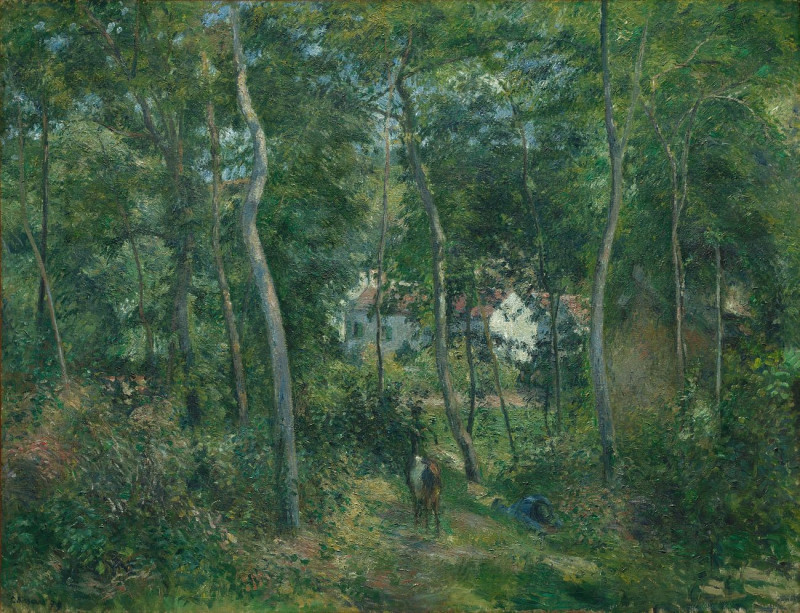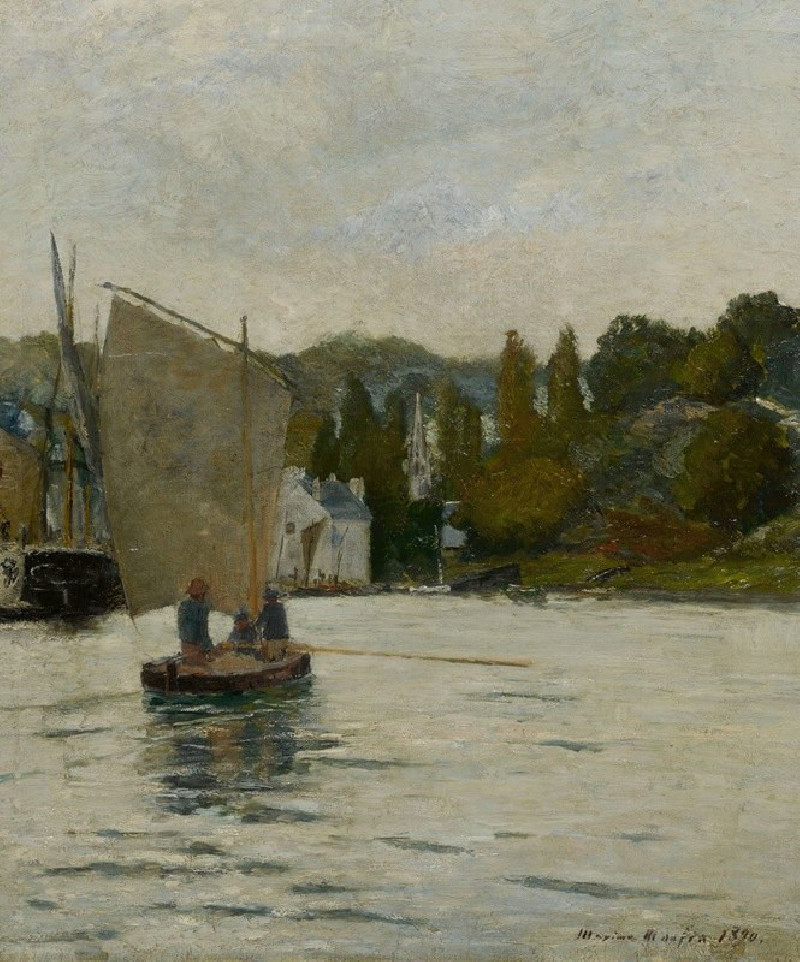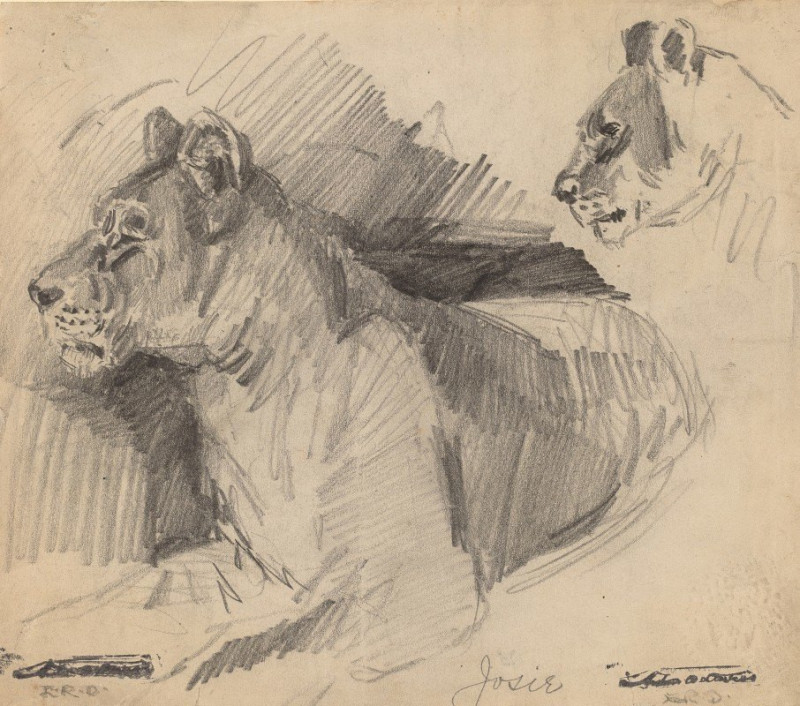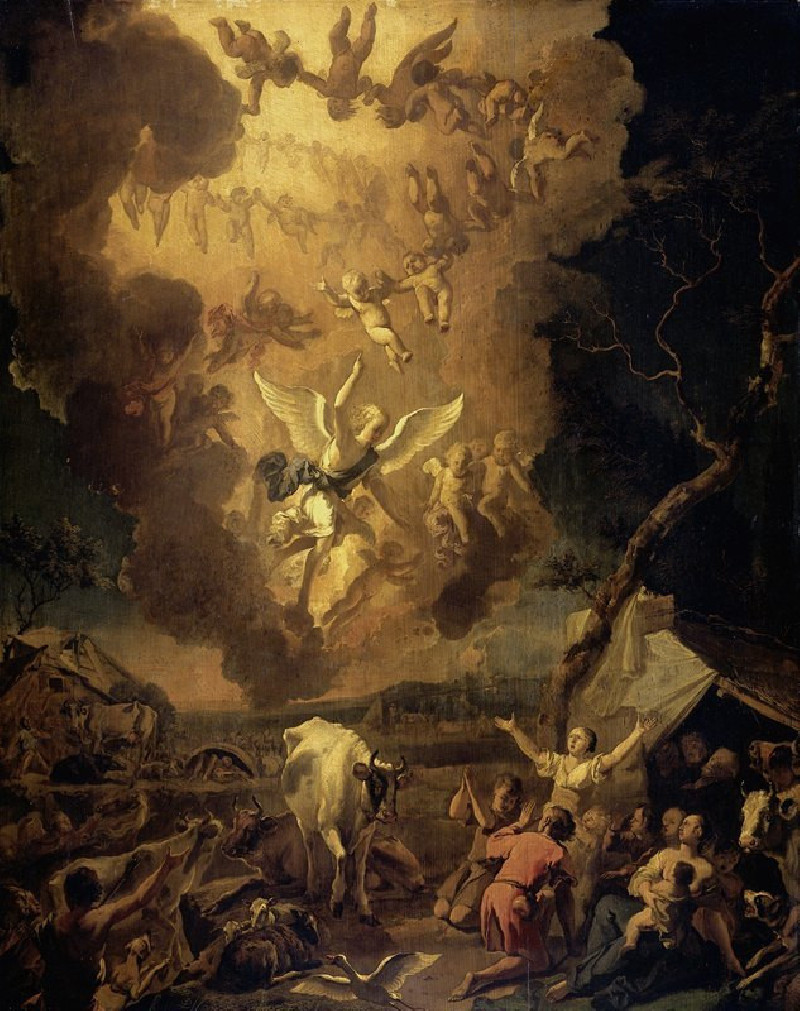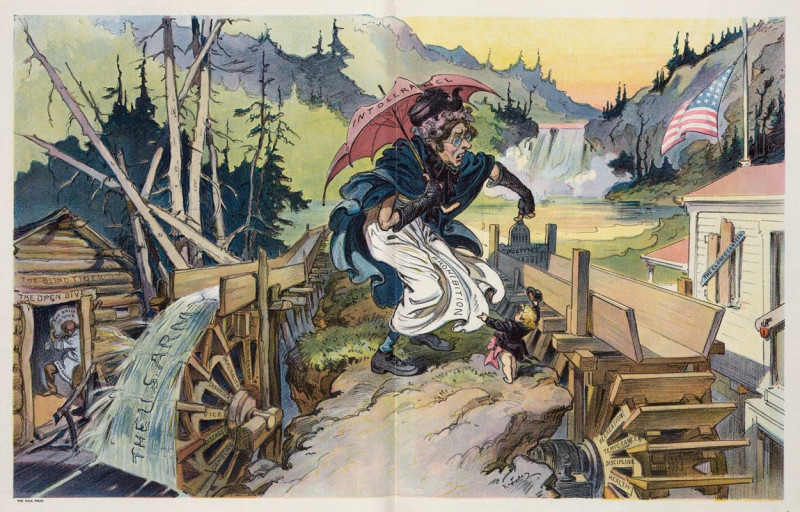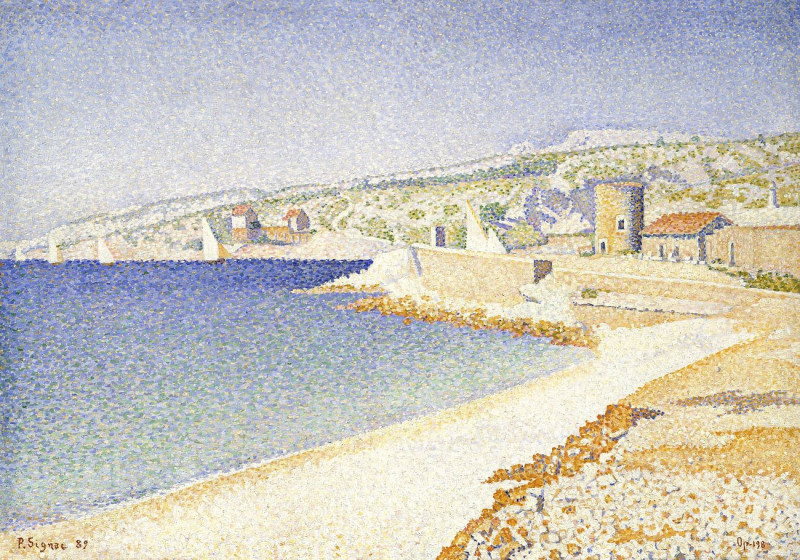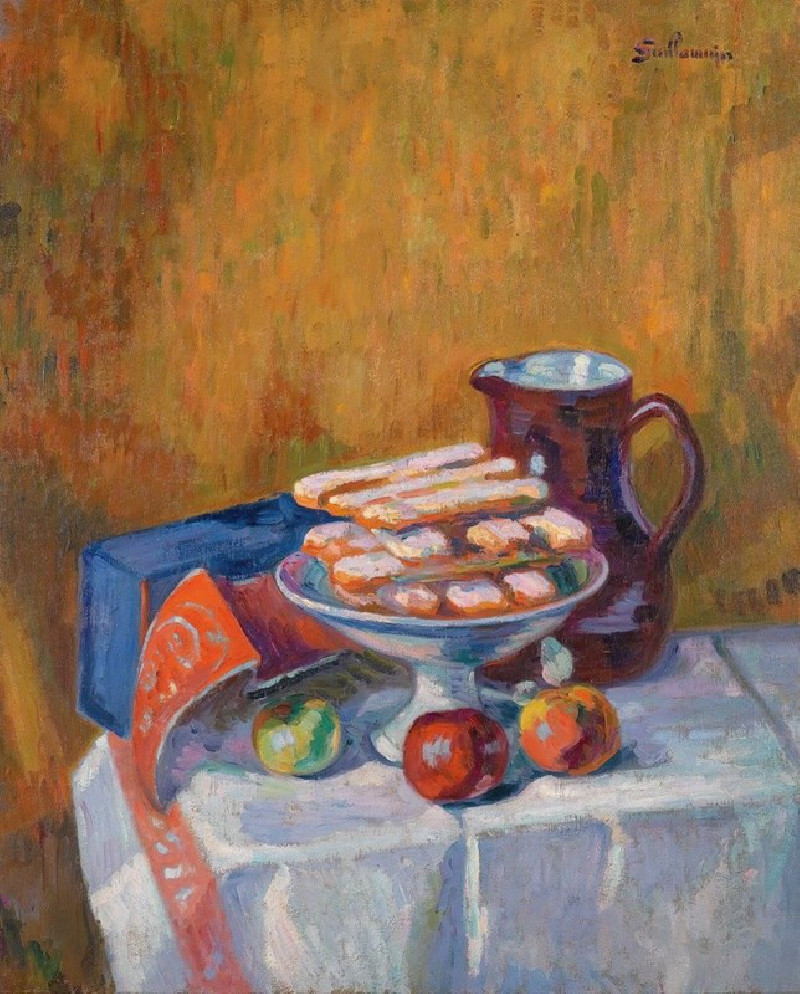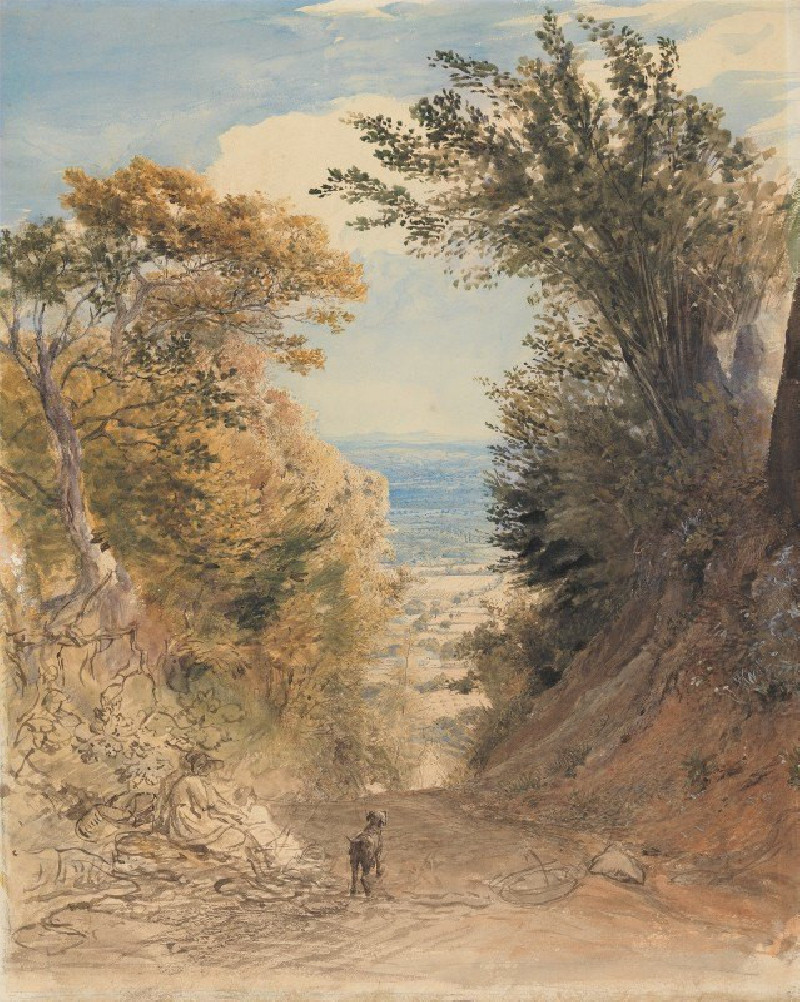Water Carriers, Venice (1884)
Technique: Giclée quality print
Recommended by our customers
More about this artwork
"Water Carriers, Venice" (1884) is a captivating painting by American artist Thomas Wilmer Dewing. This notable work captures a vibrant and bustling everyday scene along the picturesque canals of Venice. The painting offers a snapshot of life in the 19th century, focusing on the lives of locals engaged in the simple yet essential task of water carrying.In this evocative composition, a group of figures fills the foreground. The figures, characterized by their robust energy and individual expressions, represent a slice of Venetian society. A young man stands to the left, leaning casually against a balustrade, holding a white jug, his gaze out toward the viewer as if momentarily distracted from his chores. Next to him, a woman rests her hand on the stone rail, a look of resilience etched on her face. Two more women are depicted walking up the steps; they are dressed in traditional attire, balancing water vessels with effortless grace. Between them and the young man, a shirtless boy is seated beside another boy who is engrossedly looking into the distance, adding a light-hearted, serene contrast to the dutiful atmosphere of the water carriers.The background effortlessly extends this lively yet intimate scene into the grandeur of Venice. The silhouette of the city's iconic architecture, combined with the soft, diffusive light and open skies, invokes a sense of dreamlike beauty that Venice is famously romanticized for. The grand expanse of the lagoon juxtaposes the more intimate scale of human endeavor depicted in the foreground, setting an atmospheric balance between the magnificence of the cityscape and the grounded simplicity of daily life.
Delivery
Returns
Thomas Wilmer Dewing was an American painter who worked at the turn of the 20th century. Educated in Paris, Dewing was noted for his paintings of aristocratic women. He was a member of Ten American Painters and taught at the Student Art League of New York. The Smithsonian Institution's Freer Gallery houses a collection of his work.

